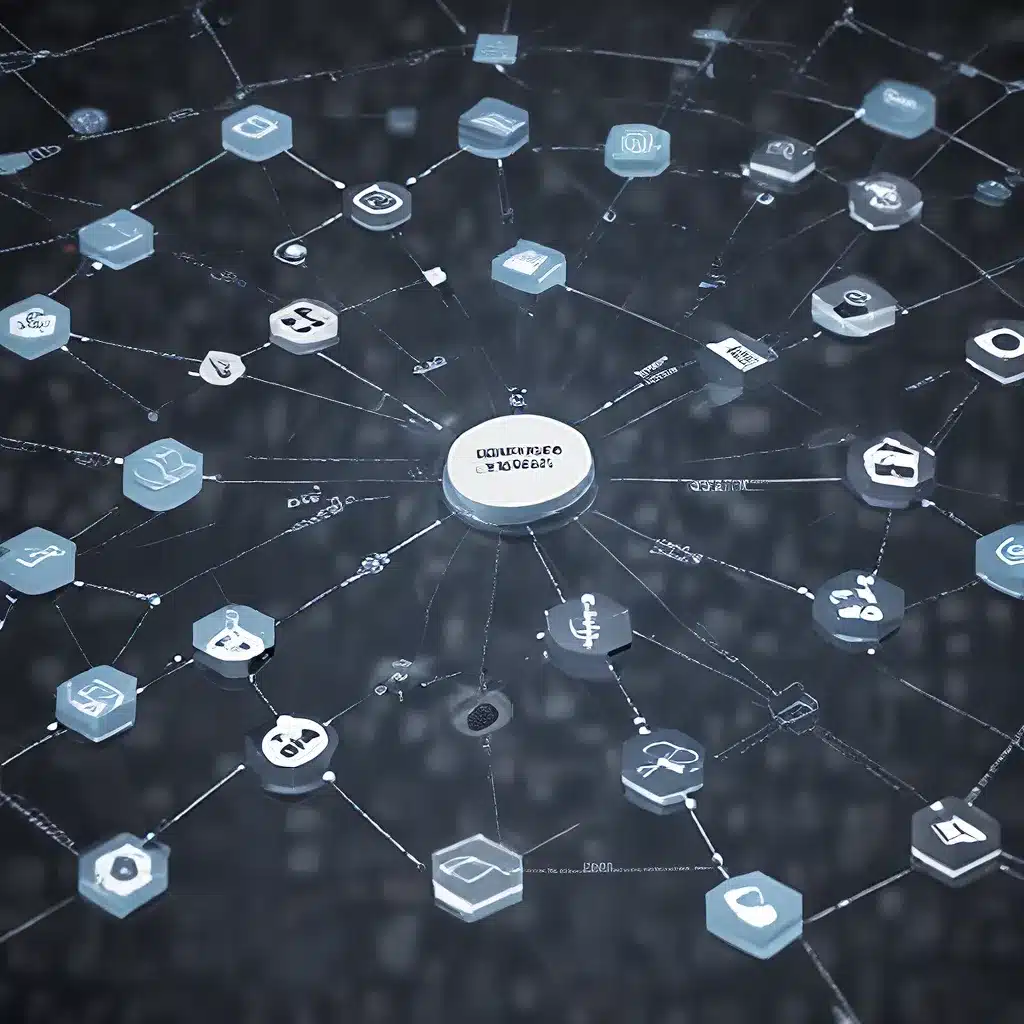
The Evolving Landscape of Sensor Networks and IoT
The world of sensor networks and the Internet of Things (IoT) has undergone a remarkable transformation in recent years. As we delve into this ever-expanding realm, it becomes increasingly apparent that the coordination and management of these distributed sensor systems play a crucial role in ensuring improved quality of service (QoS) for a wide range of applications.
Sensor networks have evolved beyond mere data collection, now serving as the backbone for a multitude of IoT-driven technologies. From smart cities and industrial automation to environmental monitoring and healthcare, these interconnected systems are transforming the way we interact with our surroundings. However, as the complexity and scale of these networks continue to grow, so too do the challenges in managing and coordinating the diverse array of sensors, devices, and data streams.
Optimizing Sensor Network Architectures
At the core of this challenge lies the need for efficient and adaptive sensor network architectures. Traditional centralized approaches, where a single control node manages the entire network, often struggle to keep pace with the dynamic nature of modern IoT environments. Distributed sensor coordination emerges as a promising solution, allowing for increased flexibility, resilience, and scalability.
Distributed sensor networks leverage decentralized decision-making and peer-to-peer communication to enable real-time adjustments and load balancing across the network. This approach empowers individual sensors to collaborate, negotiate, and self-organize in response to fluctuating environmental conditions, user demands, or system requirements. By distributing the intelligence and control functions, these networks can adapt more effectively to changing needs, minimize bottlenecks, and enhance overall QoS.
Enhancing QoS through Distributed Coordination
The key benefits of distributed sensor coordination for improved QoS in IoT include:
-
Improved Responsiveness: Decentralized decision-making allows sensors to react more quickly to real-time events, reducing latency and enhancing the timeliness of data delivery.
-
Load Balancing and Scalability: The dynamic reallocation of resources and workloads across the network prevents overloading of individual nodes, ensuring seamless scalability as the number of sensors and devices increases.
-
Fault Tolerance and Resilience: If a single node or communication link fails, the distributed nature of the network enables graceful degradation and continued operation, minimizing service disruptions.
-
Optimized Resource Utilization: Intelligent coordination among sensors allows for efficient use of energy, bandwidth, and computational resources, reducing overall operational costs and environmental impact.
-
Improved Data Quality: The collaborative nature of distributed sensor networks encourages cross-validation and data fusion, enhancing the accuracy and reliability of the information collected.
Challenges and Considerations
While the benefits of distributed sensor coordination are compelling, there are also several challenges and considerations that must be addressed:
-
Security and Privacy: The decentralized architecture introduces new attack vectors and potential vulnerabilities, requiring robust security protocols and data encryption strategies to protect against unauthorized access and data breaches.
-
Interoperability and Standards: The diversity of sensor technologies, communication protocols, and data formats within IoT ecosystems demands the establishment of common standards and interoperable frameworks to enable seamless integration and coordination.
-
Energy Management: The distributed nature of sensor networks can lead to increased energy consumption due to the processing and communication requirements of individual nodes. Energy-efficient sensor design and coordinated power management strategies are crucial for sustainable operation.
-
Complexity and Overhead: Implementing distributed coordination mechanisms can introduce additional complexity and computational overhead, which must be carefully balanced against the performance benefits to ensure overall system efficiency.
-
Sensor Heterogeneity: The wide range of sensor types, capabilities, and data characteristics within IoT systems complicates the coordination and optimization of the network, requiring adaptive algorithms and dynamic resource allocation approaches.
Emerging Trends and Future Directions
As the sensor network and IoT landscape continues to evolve, several emerging trends and future directions are shaping the advancement of distributed sensor coordination:
-
Edge Computing and Fog Architectures: The shift towards edge computing and fog-based IoT architectures is empowering localized decision-making and autonomous control at the sensor level, further enhancing the distributed coordination capabilities.
-
Machine Learning and Artificial Intelligence: The integration of machine learning and artificial intelligence algorithms is enabling adaptive and self-learning sensor network coordination, allowing for real-time optimization and intelligent resource management.
-
Blockchain and Distributed Ledger Technologies: The decentralized nature of blockchain and distributed ledger technologies is being explored for secure and transparent sensor network coordination, facilitating trusted data exchange and transactions.
-
Energy Harvesting and Renewable Power: Advancements in energy harvesting technologies and the integration of renewable power sources are reducing the reliance on traditional battery-powered sensors, enabling more sustainable and self-sufficient distributed sensor networks.
-
Standardization and Interoperability Initiatives: Industry-wide standardization efforts and interoperability initiatives, such as those led by the Sensor Networks Organization, are driving the development of common protocols, data models, and coordination frameworks to facilitate the seamless integration and optimization of distributed sensor networks.
Conclusion
As the Internet of Things continues to transform our world, the coordination and management of distributed sensor networks play a pivotal role in ensuring improved quality of service. By embracing the principles of distributed coordination, sensor network architects and IoT practitioners can unlock a new era of responsive, resilient, and efficient sensor-driven technologies, paving the way for innovative and transformative applications across a wide range of domains.